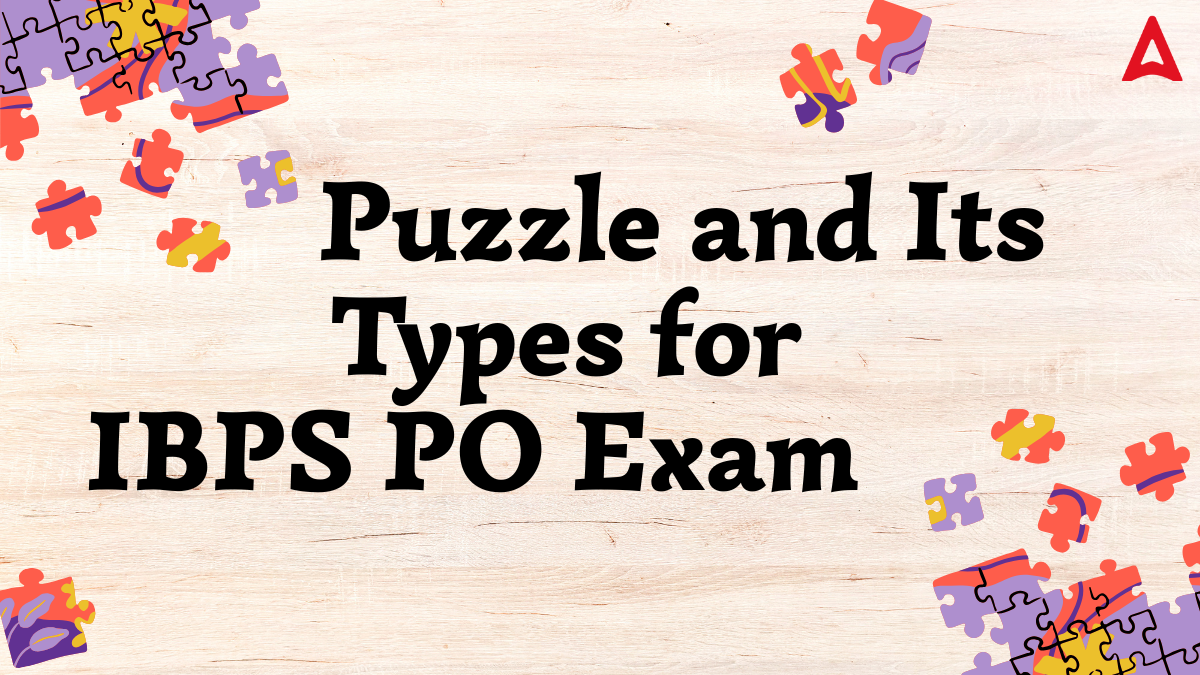Puzzles play a major role in the Reasoning Ability section of the IBPS PO Exam 2025, in both the prelims and mains stages. These questions not only test a candidate’s logical thinking and analytical skills but also assess how efficiently they can process complex information under time pressure. For aspirants aiming to crack the IBPS PO exam, mastering different types of puzzles is essential, as they form a significant portion of the reasoning section, often appearing in sets of 3-4 questions. This article explores the key types of puzzles commonly asked in the exam and offers tips to solve them accurately and quickly.
Puzzle for IBPS PO Exam 2025
Puzzles are a core component of the IBPS PO Reasoning section and are key to scoring well in both Prelims and Mains. These questions may involve seating arrangements, floor-based logic, tabular data, or a combination of multiple logic types. Practising different puzzle formats helps candidates develop the flexibility to solve any variation in the exam under strict time limits. Aspirants should build familiarity with all puzzle formats and develop a logical framework for approaching them under pressure.
Types of Puzzles Asked in IBPS PO Exam
Let’s look at the most commonly asked puzzle types in the IBPS PO exam:
1. Linear Seating Arrangement
In this type, candidates are given a set of people sitting in a row facing either the same or opposite directions. You may be asked to determine their exact positions based on the clues provided.
Example: Eight people sitting in a single row, some facing north, others south.
Skills Required: Direction sense, conditional deduction, sequencing.
2. Circular Seating Arrangement
Here, people sit around a circular table facing either the centre or outside (or both). These puzzles can involve varying directions and additional layers like professions or favourite colours.
Example: Ten friends sitting around a circle; some facing inward, some facing outward.
Skills Required: Visualisation, multiple condition tracking, spatial awareness.
3. Floor-Based Puzzle
These puzzles involve determining which person lives on which floor of a building. Variations may include the number of floors, additional information like apartment types or locations.
Example: Nine people living in a 9-floor building; each floor is occupied by one person.
Skills Required: Vertical arrangement logic, top-to-bottom sequencing.
4. Box-Based Puzzle
You’ll be given a number of boxes stacked in a vertical order. The aim is to find the position of each box based on the given clues.
Example: Seven boxes labelled A to G are stacked one above the other in a random order.
Skills Required: Hierarchical arrangement, memory of positions.
5. Month & Date Puzzle
This type combines dates, months, and events. Candidates must align people or events with their respective dates/months, often with added constraints.
Example: Eight people have birthdays in four different months on two different dates.
Skills Required: Calendar sense, multi-level mapping, elimination skills.
6. Tabular Puzzle
In these puzzles, information is given in a table format with different variables like names, cities, occupations, etc. You need to match all attributes correctly using the clues.
Example: A table with six people, their favourite fruits, cities, and vehicle types.
Skills Required: Data organisation, cross-referencing, and attention to detail.
7. Comparison-Based Puzzle
These puzzles require you to compare attributes like age, height, weight, or scores of different people and identify the order.
Example: Five people with different weights—who is the heaviest?
Skills Required: Logical ordering, condition linking, and short-form note-making.
8. Miscellaneous Puzzles (Hybrid Puzzles)
These are complex puzzles that combine elements from multiple types, like a seating arrangement along with professions and favourite dishes.
Example: Eight people sitting in a row, each has a different mobile phone and belongs to a different city.
Skills Required: Multi-layered thinking, clue grouping, structured approach.
How to Solve Puzzles in IBPS PO Exam
Solving puzzles requires a structured approach, not guesswork. Here’s a simple step-by-step method:
1. Read the Entire Puzzle Carefully: Start by reading the entire set of clues once to understand the scenario. Identify the number of variables involved (e.g., names, cities, professions).
2. Identify Key Information: Pick out direct information first. For example, “A sits second to the left of B” is direct and helps build a base.
3. Draw a Clear Structure: Use diagrams or tables depending on the puzzle type. For example, use circles for circular seating, use a vertical layout for floor-based puzzles, create a grid for tabular puzzles, etc.
4. Use the Elimination Technique: Use the process of elimination to rule out incorrect possibilities and narrow down the right ones.
5. Link Clues Logically: Group clues that mention the same person or attribute. Use them together to unlock more details.
6. Stay Organised: Note down every confirmed detail separately. Don’t try to memorise; always write it out.
7. Double-Check Before Finalising: Before marking your answer, ensure all clues are satisfied by your arrangement.
Tricks to Solve Puzzles Quickly in IBPS PO Exam
Here are some practical tips and tricks to increase speed and accuracy:
Start with the Easy Clues: Begin solving with the most direct and definite clues. They help you lay the foundation for the rest.
Don’t assume, use Only What’s Given: Stick to the information provided. Avoid assumptions unless a clue logically implies it.
Skip & Come Back Later: If a puzzle seems too long or confusing during the exam, skip it and revisit once you’ve handled quicker questions.
Use Abbreviations: Shorten names or variables (e.g., A for Ankit, B for Bhavesh) to save time when creating diagrams or tables.
Practice Combo Puzzles: In Mains, especially, puzzles combine types (e.g., floor + profession). Practice these hybrid puzzles regularly.
Solve in Reverse Sometimes: If stuck, start from the last clue and work upward; some clues make more sense in reverse.
Maintain Accuracy Over Speed: Speed matters, but accuracy is crucial. A single mistake can ruin the entire puzzle. Avoid rushing blindly.
Common Mistakes to Avoid in Puzzle Solving in IBPS PO Exam
While puzzle questions in the IBPS PO exam can be scoring, many candidates lose valuable marks due to small but critical errors. These mistakes often stem from haste, misinterpretation of clues, or lack of structured solving methods. Avoiding these pitfalls is just as important as learning the techniques. Recognizing what not to do can save time, reduce confusion, and improve overall accuracy in the reasoning section.
- Skipping the initial analysis of the puzzle structure and jumping straight into solving
- Overlooking indirect clues that carry hidden relationships
- Failing to draw diagrams or structured tables, leading to confusion midway
- Ignoring constraints or fixed positions mentioned clearly in the question
- Assuming facts not given in the puzzle, which leads to wrong conclusions
- Not verifying the logic step-by-step before finalising the answer
- Wasting time on one puzzle, even when it’s clearly time-consuming or tricky
- Panicking under time pressure, resulting in incomplete or random attempts




 Inequality Tricks for Beginners, Easy Me...
Inequality Tricks for Beginners, Easy Me...
 Reasoning Questions for SBI Clerk Mains ...
Reasoning Questions for SBI Clerk Mains ...
 500+ Reasoning Questions PDF for SBI Cle...
500+ Reasoning Questions PDF for SBI Cle...








